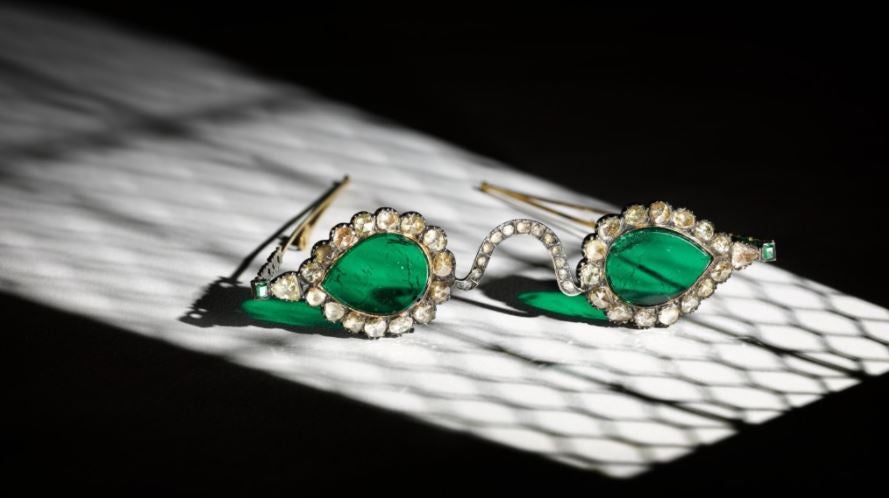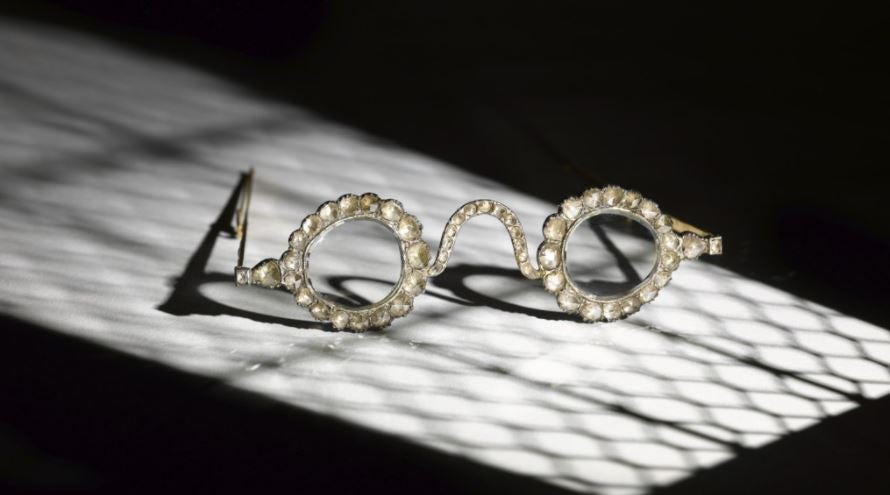Emerald and diamond glasses from Mughal-era India to be auctioned by Sotheby’s
Both pairs of glasses were held by a princely Indian family until they sold them off to European buyers in 1980s

Your support helps us to tell the story
From reproductive rights to climate change to Big Tech, The Independent is on the ground when the story is developing. Whether it's investigating the financials of Elon Musk's pro-Trump PAC or producing our latest documentary, 'The A Word', which shines a light on the American women fighting for reproductive rights, we know how important it is to parse out the facts from the messaging.
At such a critical moment in US history, we need reporters on the ground. Your donation allows us to keep sending journalists to speak to both sides of the story.
The Independent is trusted by Americans across the entire political spectrum. And unlike many other quality news outlets, we choose not to lock Americans out of our reporting and analysis with paywalls. We believe quality journalism should be available to everyone, paid for by those who can afford it.
Your support makes all the difference.Exceptionally rare bejewelled spectacles from the 17th century Mughal era in India will be sold at an auction in London this month.
The two pairs of spectacles, which feature lenses carved out of emeralds and diamonds, value around £1.5m to £2.5m each. They will be exhibited for auction on 27 October at the “Arts of the Islamic World and India” sale, auction house Sotheby’s announced on Thursday.
The emerald lenses, named the “Gate of Paradise” weigh more than 300 carats and are believed to have been carved out of a single emerald imported from the mines of Columbia, which is famous for housing the finest quality of gemstones.
Similarly, the diamond lenses titled “Halo of Light” are believed to have been carved out of a single 200-carat diamond found in the Golconda mines in the southern Indian state of Andhra Pradesh.
The auction house estimates that the original diamond was possibly the largest ever found.
To put this in perspective, the “Koh-i-Noor” from India is one of the largest cut diamonds in the world and now part of the British crown jewels. It weighs 105.6 carats.

“The quality and purity of the gemstones is extraordinary and stones of this size would no doubt have been the reserve of an emperor,” a statement from Sotheby’s said.
Although it is unclear which ruler commissioned these spectacles, the style of cutting pre-dates sawing technology, confirming a 17th-century date of production, according to experts.
“These extraordinary curiosities bring together myriad threads — from the technical mastery of the cutter and the genius of craftsmanship to the vision of a patron who chose to fashion two pairs of glasses quite unlike anything ever seen before,” said Edward Gibbs, chairman of Sotheby’s for Middle East and India.
The lenses were placed in new frames of rose-cut diamonds around 1890, estimates Sotheby’s. This traditional encasing technique is believed to have originated in India’s western state of Gujarat. The frame also incorporates a European ‘open claw’ design, which was popularised between the 18th and 19th centuries.
Both the pairs of glasses were held by a princely Indian family until they sold them off to European buyers in the 1980s.
These spectacles are said to have aided in spiritual enlightenment. According to Indian legend, diamonds were considered to illuminate and emeralds were believed to have miraculous healing powers and could ward off evil.
The colour green is also associated with paradise and prosperity in Islam. The use of emerald stones for healing can be traced back to the reign of Mughal emperor Shah Jahan, who, according to legend, treated his ailing eyes with the gemstones following his wife’s death.
Join our commenting forum
Join thought-provoking conversations, follow other Independent readers and see their replies
Comments